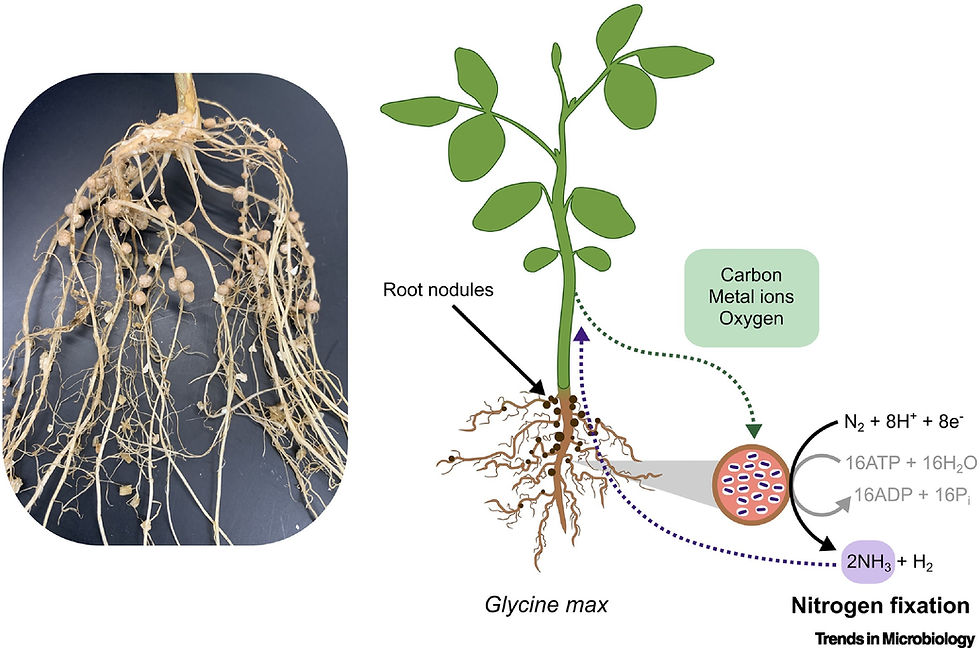Understanding the carbon-to-nitrogen ratio (C:N)
- Miguel M.LS.

- Jul 16, 2021
- 3 min read
Updated: Oct 29, 2024
One of the beautiful aspects of organic agriculture (and regenerative agriculture in particular) is that it’s not magic: it’s a comprehensive, widely different approach to growing food that’s based on the central pillar of organic fertilization. It’s backed by hundreds of thousands of studies in the fields of biology, chemistry, ecology, economics, management, and even history (to document traditional knowledge in techniques as useful as forest gardening). And, at the root of organic fertilization, composting lies as probably the most widespread method of using and reusing nutrients within an agricultural system.
That’s precisely why it’s important to understand a key concept in composting: the carbon-to-nitrogen ratio, expressed in parts of carbon per parts of nitrogen, or C: N. So, to make things clear 10:1 means ten units of carbon per unit of nitrogen, and 850,000:1 means eight hundred and fifty thousand units of carbon per unit of nitrogen, and so on (this last one is pure madness, but you get the point). The importance of all of this lies simply in the fact that the bodies of soil microbes are themselves made of carbon and nitrogen in a ratio of 8:1. Microbes need to eat carbon and nitrogen from the environment to maintain this ratio (since they lose carbon as CO2 through respiration), and in this process of eating they decompose the organic matter that they find: this process is the process of composting.

The liberation of heat is a sign that compost is teeming with bacterial activity, as heat is generated by the bacteria as a byproduct of their catabolic processes (their eating, basically). Healthy compost should be warm and stay warm even in colder climatic conditions.
The C: N ideal rate for microbes is 24:1; they need that level so that there’s always enough carbon to maintain the amount already existing in the body (8 units of carbon), plus something to eat and gain energy to move and reproduce (another 16 units of carbon, give or take). So, the whole point of this is that material that has a higher C: N ratio than 24:1 will take longer to decompose (up to months or even years), while material that has a lesser C:N ratio will take less to decompose. This is why fruits and vegetables seem to rot away relatively quickly, even on a cupboard or fridge, while straw or dry leaves can stay on a field for several weeks and just appear to look even dryer or slightly decomposed. Fruits and vegetables tend to have a lesser C:N ratio, while dry leaves or stalks of plants tend to have a higher C:N ratio. Because of these general guidelines, organic matter with lower C:N ratio than 24:1 is often called in the composting business ‘green’ matter, while organic matter with higher C:N ratio is called ‘brown’ matter. Don’t let the color alone fool you, of course: a brown banana might look brown, but it’s really a ‘green’ material for composting.

A compost pile that keeps a healthy balance of 'greens' and 'browns', trying to approach the 24:1 carbon-to-nitrogen ratio. Notice the cardboard, straw, and dry leaves ('brown' materials), and the fresh leaves, flowers, and occasional pea pod ('green' materials).
Why does this matter for organic farming, in the end? Put simply, it’s as we said above: producing any sort of finished compost or other organic fertilizer can take a drastically longer time with a C: N ratio of over 24:1. It can also force microbes to take nitrogen-fixing bacteria from the soil to cover for all the carbon they're eating so that the natural balance in their diet is and body composition is not disrupting, and this could even lead to an actual decrease in the nitrogen available for crops themselves. What’s the best way to prevent this? Looking into the several materials that are being composted, and ensuring that the overall mix approaches the 24:1 rate as closely as possible. The Department of Agriculture of the United States has even made a useful leaflet explaining how that works in more detail. Why not take a look at it here?



Comments